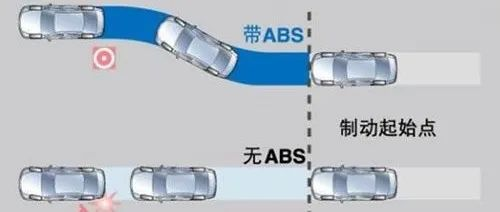Author | Banjiang
Intelligent Chassis Series (1) | Yesterday, Today and Tomorrow of Intelligent Chassis
Intelligent Chassis Technology (2) | Overview of the Development of Automotive Brake Systems
Intelligent Chassis Technology (3) | Starting From Vacuum Booster
Intelligent Chassis Technology (4) | Introduction to Line Control Brake eBooster
With the development of the automotive industry, vehicles are getting heavier and faster, which not only puts higher demands on the basic braking capability of cars but also poses greater challenges to the stability of vehicles. According to research on automotive safety, about 10% of traffic accidents are caused by vehicles deviating from the predetermined trajectory or skidding during braking. As we all know, improving the braking performance of the chassis is an important measure to reduce traffic accidents, and actively intervening in the braking system is the key to improve the braking performance.
Although the theoretical research on actively intervening in the braking system to improve vehicle stability has been carried out for a long time, the actual implementation depends on the right timing and favorable conditions in technology. The widespread application of hydraulic braking instead of traditional mechanical braking and the development of electromechanical technology have provided a technical basis for active braking intervention, and even for active intervention in driving and suspension. From the initial Anti-lock Brake System (ABS) to today’s Vehicle Dynamic Control (VDC) and Electric Stability Controller (ESC), the electronic stability system of the chassis has begun its splendid evolution.
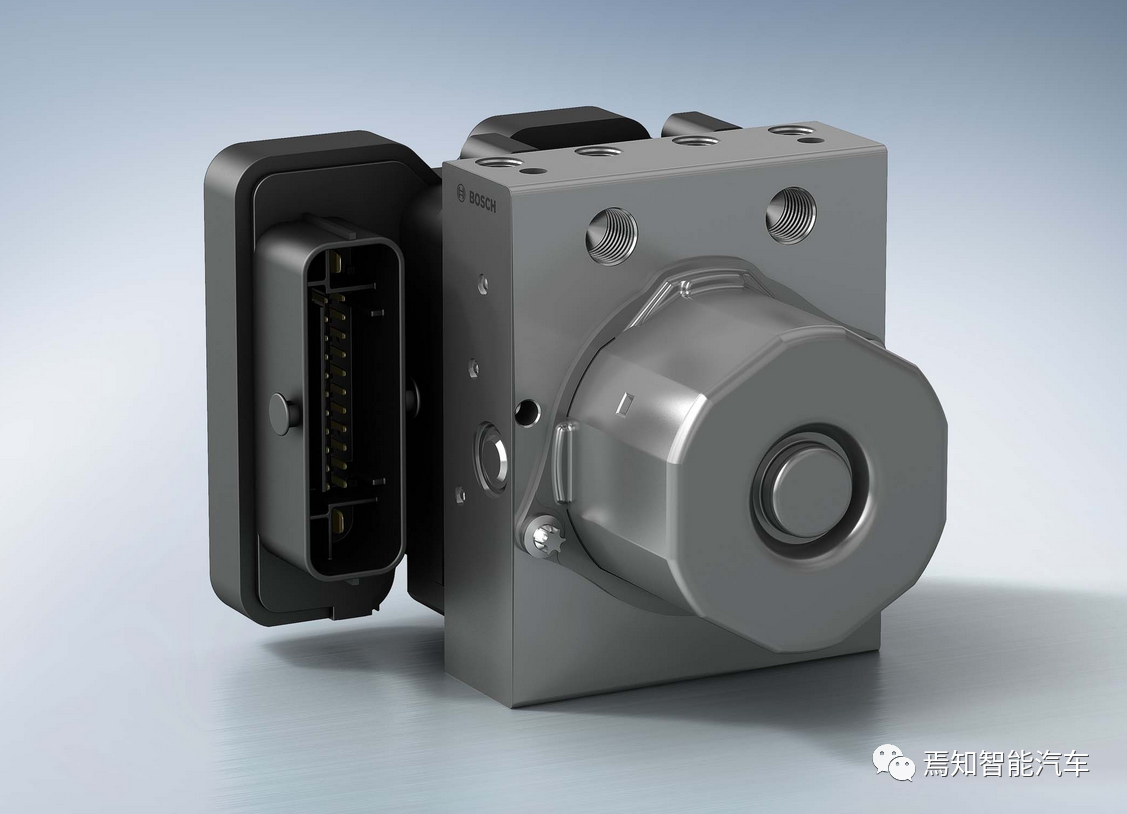
However, the evolution of electronic stability systems in the chassis has not stopped. The new E/E architecture of intelligent chassis has brought new optimization directions for the electronic stability system of the chassis. For example, under the control of the chassis domain controller, the coordinated work of various subsystems can achieve faster stability control. The topic of intelligent chassis and electronic stability system is becoming a hot topic for mainstream OEMs and suppliers.
In this context, the next few issues will explore the evolution of electronic stability systems and the new directions that intelligent chassis will bring to electronic stability systems based on the following architecture.## Anti-lock Brake System (ABS)
In daily driving, emergency braking is sometimes necessary to avoid accidents. However, during emergency braking, the braking caliper exerts too much force on the brake disc, causing the wheels to lock up. Wheel lockup can lead to improper vehicle handling and serious traffic accidents. The typical problems and reasons are summarized below:

As early as the 1930s, automotive engineers began researching the Anti-lock Brake System (ABS) to solve the problem of wheel lockup during emergency braking. ABS is a closed-loop control device in the braking system that prevents wheel lockup during braking, ensuring the braking performance and stability of the vehicle.
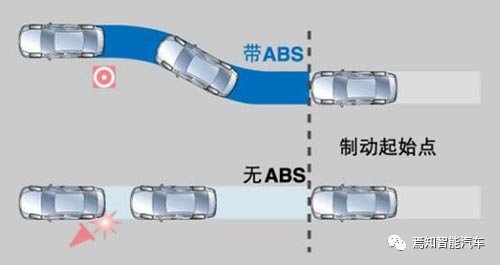
In the late 1960s and early 1970s, the first practical ABS systems for vehicles were introduced in the United States, represented by Ford’s Sure-Track and Chrysler’s Sure-Brake. The control unit used analog computer and the braking pressure was adjusted by a vacuum pressure adjuster. However, the control effect was not very good and thus did not gain popularity.
In the late 1970s, due to the development of digital electronic computer technology and the progress of hydraulic control technology, Bosch introduced ABS based on hydraulic control, which had excellent control effect. In 1978, Bosch began mass-producing ABS products. The launch of Bosch ABS marked the beginning of the development of electronic stability control system for chassis. After that, many companies, such as Bosch, ITT Automotive, Kelesy-Hayes, and Wabco, continuously strengthened their research in ABS. Various new types of ABS emerged, with improving performance and gradually decreasing prices. Nowadays, ABS has become a standard configuration for cars and commercial vehicles.

Traction Control System (TCS)
…
Electronic Stability Program (ESP)
…
Prospects: Development of intelligent chassis and electronic stability systems
…The core of ABS control is slip ratio control, which is also known as slip rate. When the tire end exerts braking force, there will be relative motion between the tire and the ground. The proportion of slide component in the wheel is called the slip ratio, represented by S.
Slip ratio has a significant effect on the adhesion coefficient of the car’s wheels when braking. As shown in the figure below, when the ground reaction force to the wheel is constant, the maximum longitudinal adhesion coefficient of braking is achieved at a slip ratio of about 20%, and the adhesion force that can be generated between the wheel and the road surface is also the largest at this time. The braking force on the ground is also the greatest; thus the braking effect is optimal. But when the wheel completely locks up, the stability of the car’s braking is at its worst.
ABS takes advantage of the relationship between slip ratio and adhesion system. When the driver encounters a situation where deep braking is required, ABS actively intervenes the braking pressure of the wheel cylinder to keep the slip ratio of the wheel within the range of 10%~30%, thus ensuring that the wheel and the road surface have good longitudinal and lateral adhesion forces, effectively preventing phenomena such as side slip, oversteer, and loss of steering during braking, and greatly improved direction stability of the vehicle during braking.
The core components of ABS that realize this control are mainly wheel speed sensors and hydraulic control units.
Four wheel speed sensors monitor the real-time speed of the four wheels and provide them to the hydraulic control unit ECU. The corresponding current vehicle speed and slip ratio of each wheel are estimated based on the wheel speed information. Based on the wheel speed information, the hydraulic control unit determines the current vehicle speed and the slip ratio of each wheel, calculates the target pressure on the wheel cylinder in real time, and realizes the control of the pressure on the wheel cylinder through the control of the hydraulic motor and the solenoid valve.
The closed-loop control of ABS can be summarized as follows:
- The driver steps on the brake, establishing brake pressure.
- The wheel speed sensor provides the speed information to the ABS ECU. The ECU calculates the slip ratio. If the slip ratio exceeds the set stable slip ratio threshold, ABS intervenes to actively manipulate the pressure on the wheel cylinder.
- The ECU adjusts the hydraulic pressure on the wheel cylinder by controlling the solenoid valve and hydraulic motor to avoid wheel lock-up.
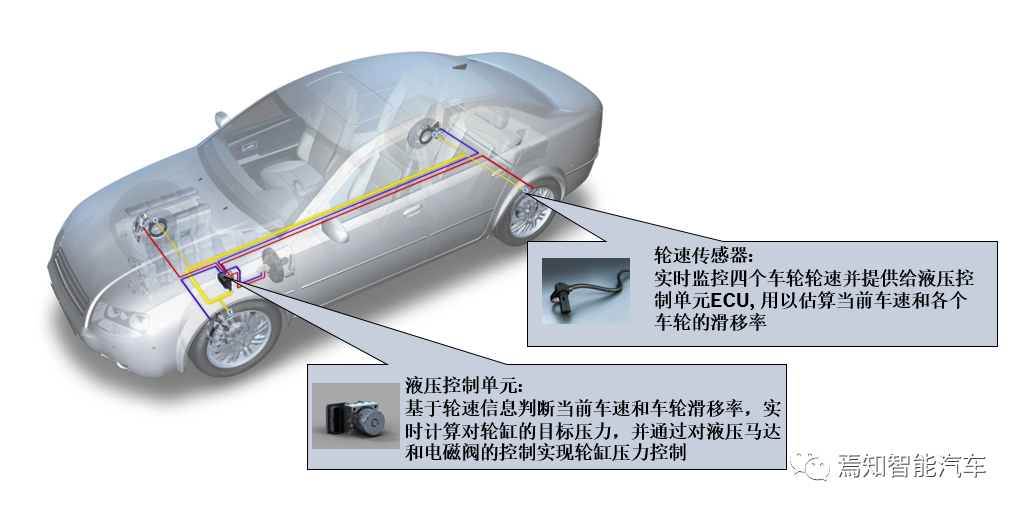
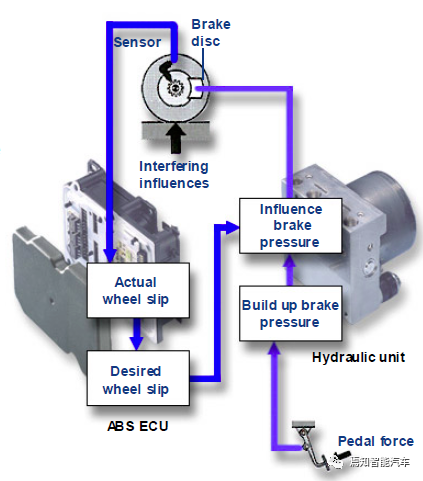

A car equipped with the ABS system can demonstrate its superiority in the following aspects:
- It can effectively utilize the adhesion between the tires and the road surface, shortening the braking distance, especially on icy and snowy road surfaces, where it can be shortened by 10%-15%;
- During braking, the wheels can still roll, maintaining the steerability of the front wheels and preventing the sliding of the rear wheels, maintaining the stability of the driving direction;
- Due to ABS braking, the wheels will not lock up and slide, reducing tire wear, improving tire life, and reducing pollution in the air.
This article is a translation by ChatGPT of a Chinese report from 42HOW. If you have any questions about it, please email bd@42how.com.
